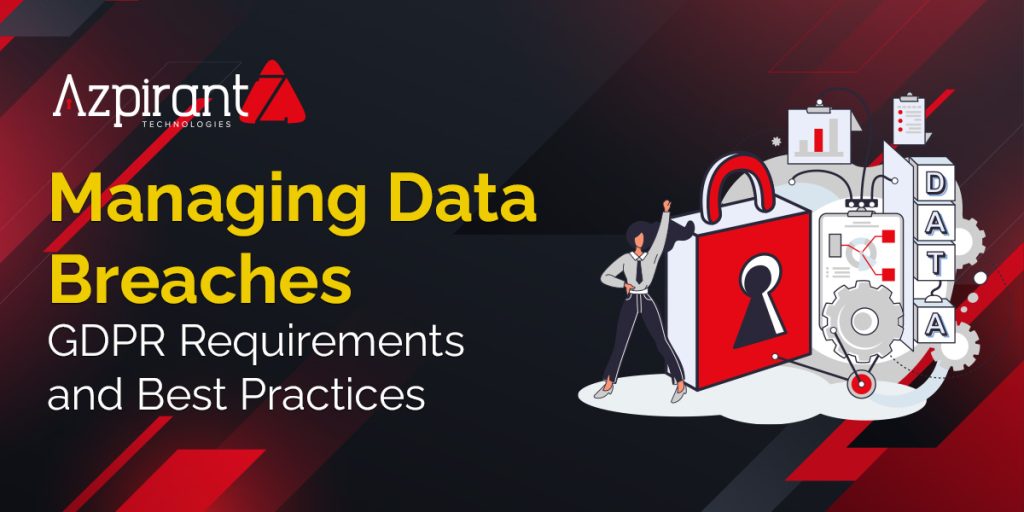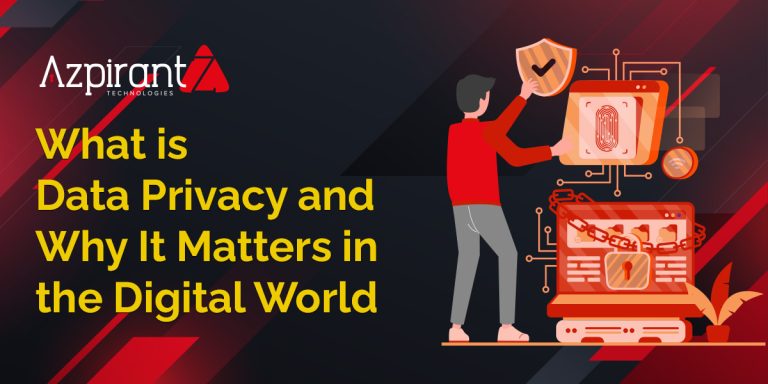Managing Data Breaches: GDPR Requirements and Best Practices
Data breaches have become a major serious concern for many organisations across various industries especially in today’s modern world. And these breaches could be cyberattacks, insider threats or employee errors, system failures all these breaches can eventually leads to the compromising the sensitive information especially the personal information of an individual at risk.

According to the GDPR, managing a data breach is not just about a security concern, but it’s a legal obligation. Organizations which process or store personal data of EU citizens must understand the requirements present in the GDPR and should be ready to act quickly and effectively especially in case a breach occurs.
This article clearly outlines some of the GDPR’s key obligations that are related to the data breaches, along with some practical best practices for the organisations to respond confidently.
The GDPR defines a data breach as any incident that leads to the accidental destruction, loss, alternation, unauthorized disclosure and access to personal data. And this shouldn’t have to look like a major cyberattack, even just sending an email with personal data to the wrong recipient could have much potential.
- Ransomware attacks encrypting customer data.
- Lost or stolen laptops containing personal information
- Data accidentally got leaked online.
- Unauthorized access by an internal user like an insider threat.
Therefore, it’s very much important to assess whether a breach is likely to impact the rights and freedoms of the individuals involved.
- Identify and assess the breach:
As soon as the breach got discovered, the time is very critical organizations must investigate like:
- What happened
- What data was affected.
- Who was impacted
- The potential consequences
This internal assessment would form the foundation for any regulators
- Notify the Supervisory Authority Within 72 Hours:
The organisation must notify the relevant supervisory authority within 72 hours of the breach and if it is likely to result in a risk to individuals.
These notifications should include:
- A proper description of the breach.
- Contact details of the DPO or whoever is responsible person.
- Consequences of the incident.
- Security measures or safeguards taken to mitigate its impact.
If it delays beyond the 72 hours, then it must be justified with the valid reasons.
- Inform Affected Individuals If There Is High Risk:
According to the GDPR, it requires that those affected especially when the risk to individuals is considered high, such as in cases where financial or sensitive health information is exposed; should have to be informed without any delay. - Maintain a Breach Record:
GDPR mandated that all the breaches should be documented internally, even if the breach doesn’t require any notification. This document should explain what happened, how the incident was managed and the reasoning behind any decisions not to report. And also, these documents must be available to supervisory authorities if requested.
- Create a Data Breach Response Plan:
It is suggested that every organisation must have a documented incident response plan, and this plan should contain roles and responsibilities, detailed procedures and communication plans. Periodically testing through simulated scenarios ensures the plan is more effective.
- Conduct Regular Risk and Impact Assessments:
Conducting the Data Protection Impact Assessments (DPIAs) would help in identifying vulnerabilities especially in how data is collected, stored. Integrating the privacy by design into the systems would reduces the likelihood of breaches.
- Train Employees at All Levels:
Many breaches that been occurred in the organisations most probably begins with a simple mistake such as clicking on a phishing link or mishandling the data. Conducting the training and awareness sessions to employees just to ensure how to recognize the threats and follow the proper security protocols accordingly.
- Review and Learn After Each Incident:
After every incident or breach, conducting a post incident review just to understand what went wrong and how can it be prevented or cannot occurs again in the future. This would not only helps to improve your processes but also demonstrates accountability.
No organisation is immune to the breaches, but being prepared can make the big difference in how quickly it can be recovered. And also by aligning your breach response efforts with GDPR requirements and following the security best practices would definitely meets the regulatory requirements as well as building a culture of trust.
At Azpirantz, we help businesses build robust information security frameworks. Our consulting services are designed to address current regulations like GDPR while enhancing your overall security. From data audits and breach response to AI compliance and privacy-by-design strategies, our goal is to help you integrate GDPR compliance in a way that strengthens your business in today’s data-driven environment. Explore our GDPR and security consulting services at Azpirantz to learn more.
We're Here To Help


